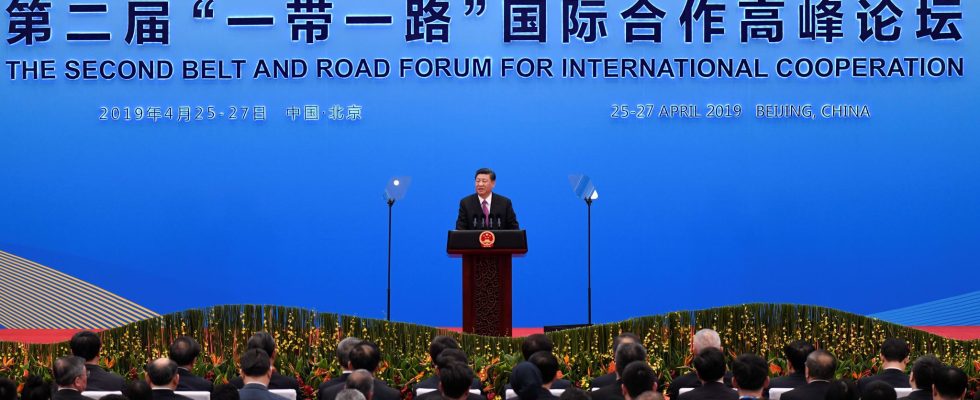While China celebrated the success of the new Silk Roads on October 18, to mark the tenth anniversary of the project, the Chinese program seems to mainly benefit Beijing. Since 2013, China’s Belt and Road Initiative has helped more than 160 foreign countries develop and build complex trade, transportation and communications infrastructure.
Both logistical and economic support: according to a report published Monday, November 6 by the American research institute AidData at the University of William and Mary in Williamsburg (Virginia), the participating nations are now in debt of more than 1,100 billion dollars to the Asian giant. A debt largely contracted by developing countries, making them dependent on China for years to come.
China is the world’s largest debt collector
TGV line in Burma, commercial port in Sri Lanka, data center in Kenya… In ten years, Beijing has granted billions of dollars in loans to finance costly and complex infrastructure in developing countries. In total, there are nearly 21,000 projects supported by the New Silk Roads program, for $2,000 billion granted to 165 countries, according to the Chinese government.
However, China’s financial aid takes the form of bank loans, supposed to be repaid according to a strict schedule and with interest. Result: the American research institute AidData estimates that more than half of these loans have now entered their repayment phase, representing “at least $1.1 trillion” owed to Beijing. A gigantic sum that doesn’t even include interest. The Asian giant therefore now plays “an unfamiliar and uncomfortable role: that of the world’s first official debt collector”, underlines the report.
Above all, the research institute gives more details on indebted countries: “80% of China’s overseas loan portfolio in the developing world currently supports countries in financial difficulty,” says AidData. This is explained by the flexibility of entry into the new Silk Roads. As the American daily reminds us New York TimesChina has increased the number of projects by “rarely requiring in-depth environmental studies, examinations of financial viability or controls on the displacement of local populations”.
Infrastructure could therefore be financed quickly, but the sharp rise in interest rates in recent years has caused the cost of loans contracted to explode. The result: many governments find themselves with debts that they are unable to repay.
Trojan horses to expand its influence
This concentration of developing countries in the new Silk Roads program seems to be desired by the Asian giant. By analyzing data compiled on Chinese financing, AidData estimates that Beijing has provided aid and credit “approximately $80 billion per year” to low- and middle-income countries. This is 20 billion dollars more than the United States over the same period.
Through the “Belt and Road” initiative, Beijing is developing its influence by establishing commercial ties with countries in the South. But behind its promises to bring them resources and growth, the choice of these financially unstable countries and the opacity of the costs of infrastructure built by Chinese companies place them in a weak position vis-à-vis China.
A situation that benefits Beijing. In 2017, Sri Lanka found itself unable to repay its $1.4 billion debt owed to Beijing for the construction of the Hambantota port. Colombo therefore had to cede this port to a Chinese public company for the next 99 years. A strategic position in the Indian Ocean that Beijing has not hesitated to use recently: at the end of October, a huge Chinese ship suspected of serving as a spy base docked in Hambantota, with the agreement of Sri Lanka.
A weight of the new Silk Roads which could turn against Beijing in the years to come. Some countries such as Malaysia or Burma are currently trying to renegotiate their agreements to reduce their charges, while the Philippines announced in October that it was abandoning three railway infrastructure projects via this program, specifies the American media Newsweek. Instead, the government in Manila is considering financing from the World Bank, which is influenced by the United States.
.
